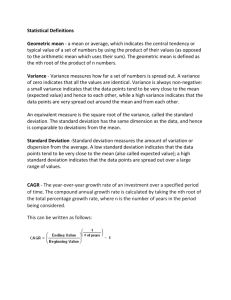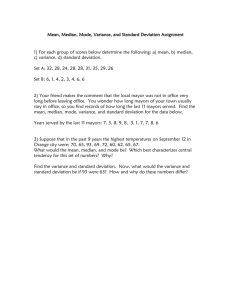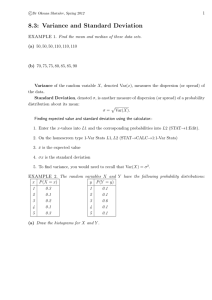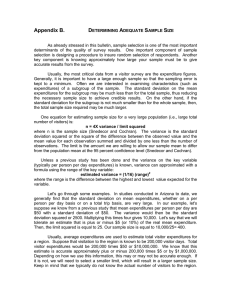Document 10435120
advertisement
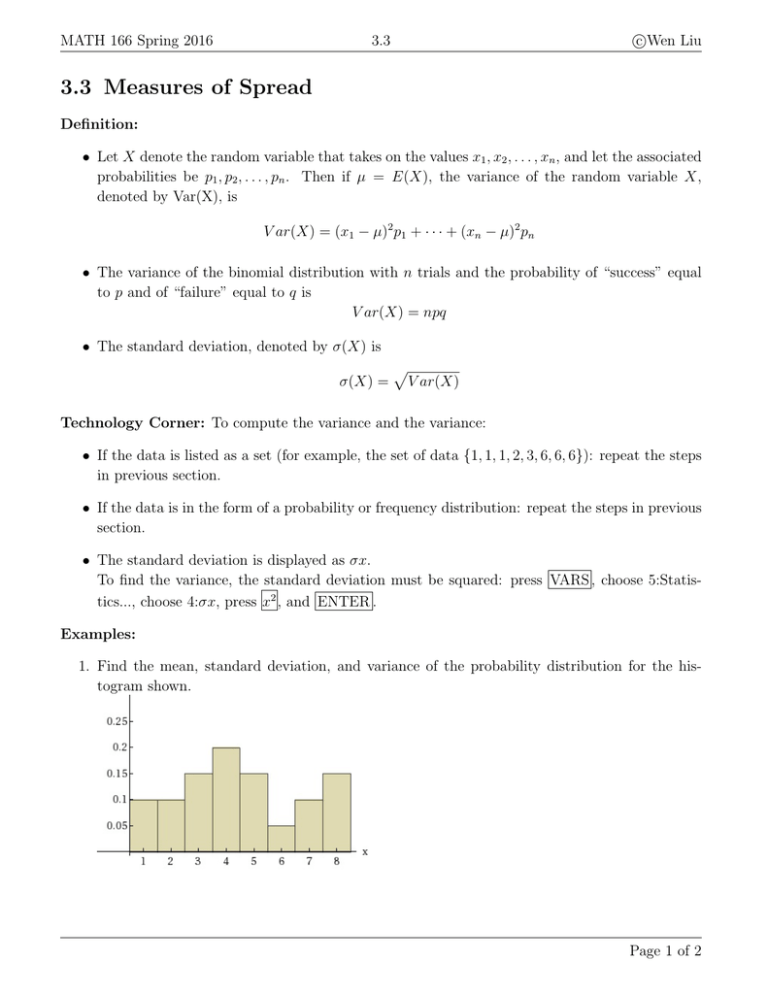
MATH 166 Spring 2016
c
Wen
Liu
3.3
3.3 Measures of Spread
Definition:
• Let X denote the random variable that takes on the values x1 , x2 , . . . , xn , and let the associated
probabilities be p1 , p2 , . . . , pn . Then if µ = E(X), the variance of the random variable X,
denoted by Var(X), is
V ar(X) = (x1 − µ)2 p1 + · · · + (xn − µ)2 pn
• The variance of the binomial distribution with n trials and the probability of “success” equal
to p and of “failure” equal to q is
V ar(X) = npq
• The standard deviation, denoted by σ(X) is
σ(X) =
p
V ar(X)
Technology Corner: To compute the variance and the variance:
• If the data is listed as a set (for example, the set of data {1, 1, 1, 2, 3, 6, 6, 6}): repeat the steps
in previous section.
• If the data is in the form of a probability or frequency distribution: repeat the steps in previous
section.
• The standard deviation is displayed as σx.
To find the variance, the standard deviation must be squared: press VARS , choose 5:Statistics..., choose 4:σx, press x2 , and ENTER .
Examples:
1. Find the mean, standard deviation, and variance of the probability distribution for the histogram shown.
Page 1 of 2
MATH 166 Spring 2016
3.3
c
Wen
Liu
2. The monthly gas bill (in dollars) for a typical family from May 2009 through April 2010 is
summarized in the following table. Find the mean, standard deviation, and variance of the
amount of the monthly gas bill for a typical family for the 12-month period under consideration.
3. A new drug has been found to be effective in treating 80% of the people afflicted by a certain
disease. If the drug is administered to 600 people who have this disease, what are the mean
and the standard deviation of the number of people for whom the drug can be expected to be
effective?
Page 2 of 2





